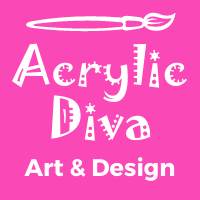Five Color Exercises To Liven Up Your Paintings
Are you stuck in a color rut? Using the same old palette of colors again and again? Step outside your comfort zone with these exercises and inject some variety into your work.
Start with an analogous color scheme. Analogous colors are next to each other on the color wheel. So think red, red-orange and yellow. Too subtle, you think? Perhaps. But that’s the idea. How do you make a decent painting with colors so close to each other? Mark Rothko anyone?
Try out a monochromatic color scheme. A monochrome palette will use only one color but in varying tints (mixed with white) and shades (mixed with black). Again, you might be wondering what you could possibly do with just one color. I’m going to point you to Brice Marden, among other people. He obviously had no problem with just using one color.
Work in a tenebrism palette. What? That sounds like some kind of medical lingo, right? Nope, actually, Caravaggio and Rembrandt used this technique. In fact, one of my favorite paintings Rembrandt’s “The Night Watch” uses this technique. Using high contrast from white to inky black, this technique creates visual depth. And it’s not just for realism, either. It can be applied to any genre.
Speaking of contrast, how about the chiaroscuro technique? This is a dialed-back version of tenebrism. Contrast from very light to very dark is used, but less than black. So you have dark colors that create depth, but not as dramatic as tenebrism. Da Vinci’s “Virgin of the Rocks” is a good example.
Tesia Blackburn “Samtosha”
And last but not least, my favorite type of palette - complementary colors. Complementary colors are across the color wheel from each other. I’ve used this palette a lot in my painting career. But let me be clear, using complementary colors without some finesse can come off as cartoonish or dull. So if you’re thinking of using blue and orange right out of the tube, try adding in a bit of black or gray to create a more complex set of complements. I’ll use one of my own paintings as an example, “Samtosha” from my Lotus Series.
Whichever palette you choose, try to change it up periodically. It will sharpen your skills in color and freshen your palette (see what I did there?)
Books and more about color:
Betty Edwards on Color: You love her drawing book! Check out her color book. Equally wonderful.
Itten: The Elements Of Color: This is a link to the 1970s version of his amazing book. Grab it if you can. It’s the exact version I have, and it’s amazing.
My book “Acrylic Painting with Passion” has an entire chapter devoted to color mixing and I explain my “discrete color mixing” technique in full.
Golden’s 6 Color Essentials Set. My absolute go-to set for painting. It’s all there, everything you need. This set is being revamped, so get the original while you can. It includes a color mixing guide that is truly exceptional.


